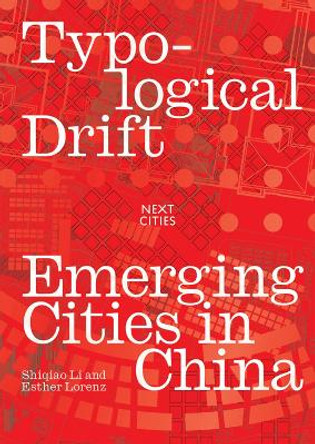Description
This book teaches us to read the contemporary Chinese city. Li Shiqiao deftly crafts a new theory of the Chinese city and the dynamics of urbanization by:
- exploring the rise of stories of labour, finance and their hierarchies
- examining how the Chinese city has been shaped by the figuration of the writing system
- analyzing the continuing importance of the family and its barriers of protection against real and imagined dangers
- demonstrating how actual structures bring into visual being the networks of safety in personal and family networks.
Understanding the Chinese City elegantly traces a thread between ancient Chinese city formations and current urban organizations, revealing hidden continuities that show how instrumental the past has been in forming the present. Rather than becoming obstacles to change, ancient practices have become effective strategies of adaptation under radically new terms.
About the Author
Li Shiqiao is Weedon Professor in Asian Architecture, School of Architecture, University of Virginia, where he teaches courses on history and theory of architecture, and architectural design studios. He studied architecture at Tsinghua University in Beijing and obtained his PhD from AA School of Architecture and Birkbeck College, University of London. Li practiced architecture in London and Hong Kong, and initiated design proposals which were published and exhibited in journals and international exhibitions. Some of his design research and teaching is featured in Kowloon Cultural District (Hong Kong: 2014, edited with Esther Lorenz). His research agenda contribute towards an understanding of Asian architecture with its intellectual independence and influences. His theoretical writings appeared in major international peered reviewed journals, and his books include Understanding the Chinese City (London: Sage, 2014), Architecture and Modernization (Beijing: 2009) and Power and Virtue, Architecture and Intellectual Change in England 1650-1730 (London and New York: Routledge, 2007). He was keynote speaker at University of Johannesburg, RMIT University, Melbourne University, Southeast University, Peking University, Beijing Normal University, and lectured widely in academic institutions throughout the world. He taught at AA School of Architecture, National University of Singapore and The Chinese University of Hong Kong.
Reviews
Asked what was the difference between Japanese space and 'western' space, Maki declared emphatically: 'Nothing!' Tackling differences in spatial thinking from inside both 'western' and Chinese thinking, Li Shiqiao demonstrates how mental space, Chinese and 'western,' is determined by culture. -- Professor Leon van Schaik
Li Shiqiao reveals continuities between ancient Chinese city formations and current urban organizations where others see only rupture and chaos. No other work on the staggering urban explosion in China so deftly displays the complexities of these current formulations. Bringing an impressive array of disciplines into conversation with each other, this book gestures toward what urban studies could and should be.
-- Professor Ryan BishopLi Shiqiao has written the only book on the Chinese city that captures at once the accelerated hypermodernity of the Shanghai stock exchange and 2500 years of Daoist and Confucian culture. It will be a classic.
-- Professor Scott LashIf as Wittgenstein suggested, the limits of one's language set the limits of one's world, what difference does it make to conceptualise things in a different kind of word and to give an alternative significance to numbers? In this book Li Shiqiao argues that ideas taken for granted in the West and built into our scientific world-view are by no means universal, while concepts such as yin yang, four cardinal points, five phases, the ten heavenly stems and twelve heavenly branches, allowed the ancient Chinese to develop a different conception of space and time. This is reflected in their architecture and town-planning, and must be taken into account if we are to understand it. -- Professor Peter Blundell Jones
The book not only provides a new framework and fresh thinking for research on the Chinese city but also contributes to contemporary urban studies by providing a model for cultural-based research on urbanisation. Understanding the Chinese City is an excellent book. It is suitable not only for academic researchers for research purposes but also for readers interested in Chinese culture.
-- Na Ta, East China NormalBook Information
ISBN 9781446208823
Author Li Shiqiao
Format Hardback
Page Count 264
Imprint Sage Publications Ltd
Publisher Sage Publications Ltd
Weight(grams) 550g






